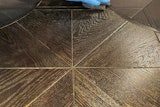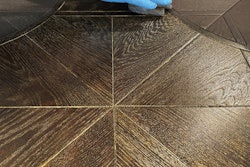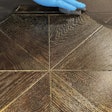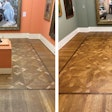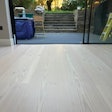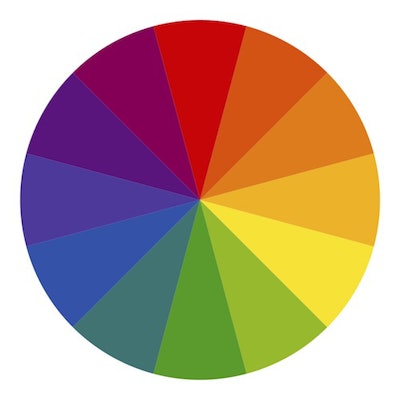
One of most common questions I get about stain is, simply, how to get the color you want. If you are trying to mix stains to get a specific color, the color wheel is the best place to start. In case you aren’t familiar with it, here’s a basic color wheel:

On the color wheel, the color opposite any color cancels that color out; generally, it will turn it brown. So red cancels green, purple cancels yellow and blue cancels orange, and of course, the reverse is true.
Using that basic premise, stain colors can easily be adjusted to meet your desired effects. One of the classic examples in our industry is when people want to cancel the pinkish/red color in red oak. I can tell you that very popular stain colors for us on red oak are Jacobean, Dark Walnut and Ebony — and those happen to be three colors with the most green in them. So, those three colors naturally minimize some of the red in red oak.
Another common example with today’s color trends is people staining white oak gray. Oftentimes, when people do that, a bluish effect can appear. Orange can help cancel that, so stains that have the most potential to cancel the blue are the ones that have the most orange in them, which for us is Colonial Maple and English Chestnut.
Knowing this makes your life easier as a wood flooring pro. Are you staining white oak but worried about the green tones? Be sure to avoid those stains with a lot of green; instead, try the colors that have red. Using the color wheel can save you a lot of time, experimentation, and back-and-forth with your customers.
More from Toby Merrill:
Sponsored Blog: Years of Experience Don’t Equate to Years of Knowledge
Sponsored Blog: The Real Cost of Bad Sanding
Sponsored Blog: This Is What Happens When You Rush a Job










